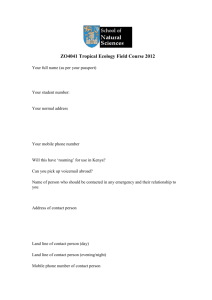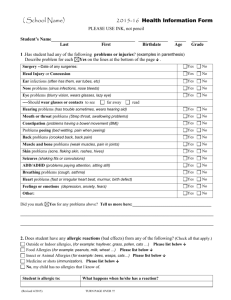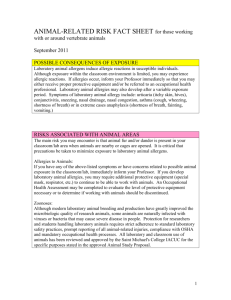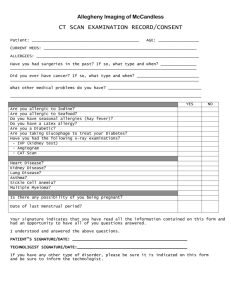Children with Food Allergies
advertisement
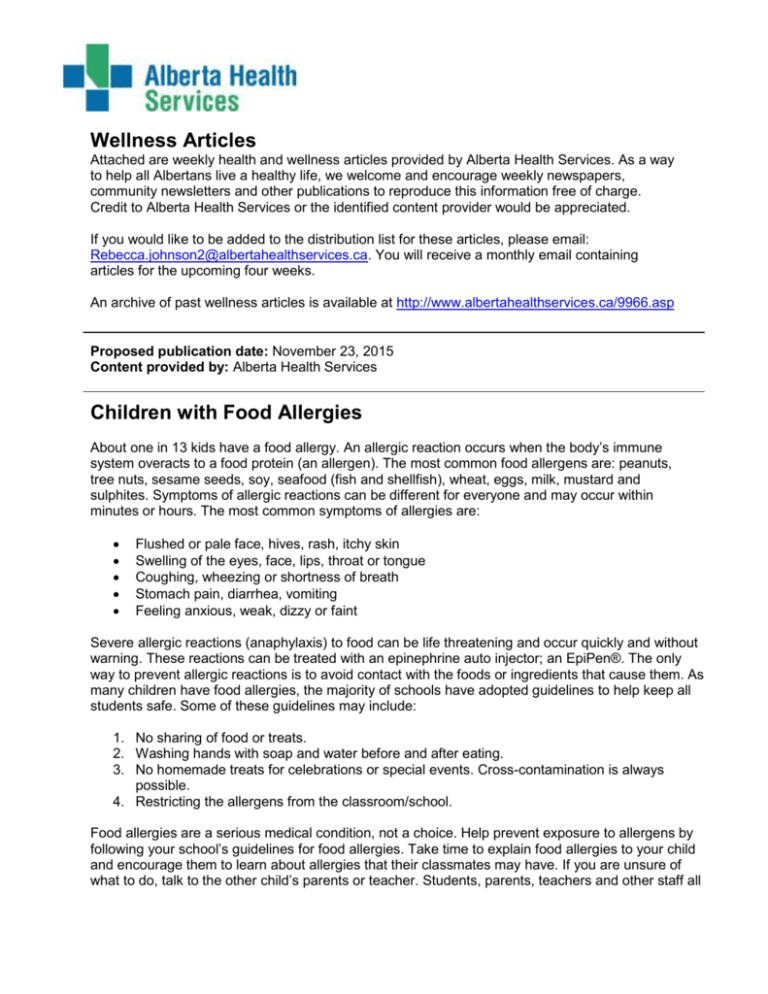
Wellness Articles Attached are weekly health and wellness articles provided by Alberta Health Services. As a way to help all Albertans live a healthy life, we welcome and encourage weekly newspapers, community newsletters and other publications to reproduce this information free of charge. Credit to Alberta Health Services or the identified content provider would be appreciated. If you would like to be added to the distribution list for these articles, please email: Rebecca.johnson2@albertahealthservices.ca. You will receive a monthly email containing articles for the upcoming four weeks. An archive of past wellness articles is available at http://www.albertahealthservices.ca/9966.asp Proposed publication date: November 23, 2015 Content provided by: Alberta Health Services Children with Food Allergies About one in 13 kids have a food allergy. An allergic reaction occurs when the body’s immune system overacts to a food protein (an allergen). The most common food allergens are: peanuts, tree nuts, sesame seeds, soy, seafood (fish and shellfish), wheat, eggs, milk, mustard and sulphites. Symptoms of allergic reactions can be different for everyone and may occur within minutes or hours. The most common symptoms of allergies are: Flushed or pale face, hives, rash, itchy skin Swelling of the eyes, face, lips, throat or tongue Coughing, wheezing or shortness of breath Stomach pain, diarrhea, vomiting Feeling anxious, weak, dizzy or faint Severe allergic reactions (anaphylaxis) to food can be life threatening and occur quickly and without warning. These reactions can be treated with an epinephrine auto injector; an EpiPen®. The only way to prevent allergic reactions is to avoid contact with the foods or ingredients that cause them. As many children have food allergies, the majority of schools have adopted guidelines to help keep all students safe. Some of these guidelines may include: 1. No sharing of food or treats. 2. Washing hands with soap and water before and after eating. 3. No homemade treats for celebrations or special events. Cross-contamination is always possible. 4. Restricting the allergens from the classroom/school. Food allergies are a serious medical condition, not a choice. Help prevent exposure to allergens by following your school’s guidelines for food allergies. Take time to explain food allergies to your child and encourage them to learn about allergies that their classmates may have. If you are unsure of what to do, talk to the other child’s parents or teacher. Students, parents, teachers and other staff all have an important role in keeping students safe, healthy and happy. To learn more about allergies, visit: www.myhealth.alberta.ca or call Health Link at 811.
